Paludiculture Newsletter 1|2024
General information and news on peatlands and paludiculture
25 years of paludiculture

The evolution of a "simple" word for an entire concept, put together of the Latin words, 'palus' for swamp and 'cultura' 25 years ago, calls to be celebrated this year - join this anniversary from June 10-11th 2024 at Braunschweig - a "birthday party" full of lectures, excursions and opportunity for intensive networking to create a large "Paludi-Netz" full of knowledge. Registration is now open.
The word "paludiculture" was born 25 years ago. A "simple" word was needed for an entire concept: rewetting drained peatland to stop the release of greenhouse gases and to continue using it in a new sustainable type of agriculture. It was made up of two Latin words, 'palus' for swamp and 'cultura' for cultivation. A lot has happened since then: Pioneers have tested paludiculture, research projects have looked at various aspects from sowing to certificates, politicians are looking into it and companies are beginning to discover paludiculture as a market. This development will be celebrated at the anniversary on June 10-11th (lunch to lunch) in Braunschweig, Germany. Online registration is now possible.
The PaludiZentrale project, jointly organized by the Thünen Institute, the University of Greifswald and the Succow Foundation, invites you to lectures, excursions and intensive networking. The aim is to create a large Paludi network from paludiculture initiatives and projects in Germany to exchange know-how and experience.
Nature Restoration Law once more on the edge
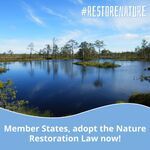
A nail-biter that seems to have no end: the Nature Restoration Law. At the end of February, it was passed by the European Parliament by a narrow majority, and at the end of March, the European Council removed it from its agenda. The majority in favor had dwindled. Green politician Jutta Paulus is trying to save the law with a petition to the Council President and Belgian Prime Minister Alexander De Croo.
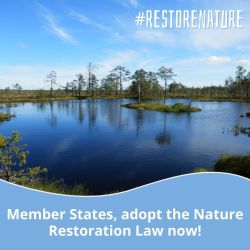
The Council should actually have waved the law through on 25th March 2024, after the European Parliament passed the Nature Restoration Law with 329 votes in favour, 275 against and 24 abstentions on 27th February. This step had been regarded as a mere formality. However, at the preceding meeting of the Committee of Permanent Representatives of the Member States, the law no longer received a majority. Eight member states, including Hungary and Italy, withdrew their support for the legislation.
What does this mean for the draft law, which was modified and watered down after initial rejection in order to gain a narrow majority in parliament? There will now be talks with the member states that have positioned themselves against it or abstained, as MEP and politician Jutta Paulus (Greens/EFA) explained in a webinar on the topic. Paulus has also launched a petition calling for the law to be passed. It has already collected more than 11.000 signatures. "I expect the governments of the Member States to live up to their responsibility and finally give their approval to the democratically negotiated law", Paulus said. If this is successful, the legislative proposal will be resubmitted to the European Council for final approval. Only then will saving nature be enshrined in law and all EU member states will be obliged to implement it. "The Nature Restoration Law is indispensable for tackling the climate and biodiversity crisis. Only healthy ecosystems can provide drinking water, clean air and fertile soils! The revitalisation of peatlands must be promoted throughout Europe, and this needs mandatory targets", Jutta Paulus is emphasising the importance of the regulation.
Once the law comes into force, the EU member states must then draw up national nature restoration plans in which they set out measures. This can include the rewetting of peatlands as well as the restoration of river courses in order to reduce the risk of flooding after heavy rainfall events in the long term. By 2030, at least 20% of Europe's land and sea areas are to be restored.
Article 9 of the proposed legislation deals specifically with peatlands, which is concerned with the restoration of ecosystems used for agriculture. The wording reads: "Member States shall take restoration measures for organic soils used for agriculture that are drained peatlands." According to the proposed legislation, 70% of these areas should be rewetted by 2050.
For Germany, this means that this law to save nature must first be concretised for German law and responsibilities between the federal and state governments must be clarified. This was explained by Jan-Niclas Gesenhues, State Secretary at the Federal Ministry for the Environment, Nuclear Safety and Consumer Protection, in a joint webinar with Jutta Paulus and peatland researcher Franziska Tanneberger from the Greifswald Mire Centre on 28th February. The German draft for implementing the NRL is due to be submitted to the EU Commission in 2026.
Investing in peatlands – with a profit
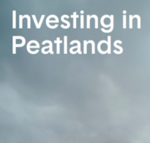
Peatland pays off! It provides carbon, water, biodiversity - goods that play a role for markets today. The report Investing in Peatlands shows how money can be invested in peatlands, their restoration and sustainable use in an economically and ecologically sensible way.
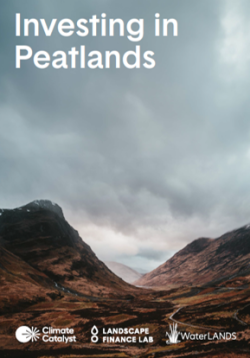
The report, which experts from fifteen European organizations including the Michael-Succow-Foundation, partner in the Greifswald Mire Centre (GMC), contributed to, states that 300 billion Euros would be needed for worldwide peatland restoration measures between 2022-2050 in order to contribute to keeping global temperature increase below 2 °C by 2050. That's quite a lot of money that needs to be raised and invested in the future, but in comparison much less than reforestation would require over the same period, namely 3,400 billion Euros.
The report, published by the NGO Climate Catalyst and partner, presents some examples of private and public initiatives and programmes for funding peatland restoration in Europe. However, it makes clear that investing in peatlands on a large or widespread scale is new and funders must first be convinced of the value of landscape-based investment. According to the proposal, an overall concept should be developed through cooperation between private donors, the government and NGOs in order to minimize the risk of financial losses for the individual parties involved. The aim is to establish a stable system that is attractive to other investors within thirty years. During this time, jobs are to be created in ecotourism, paludiculture and in companies specializing in the rewetting of peatlands. Another source of income for investors will be continuous emission credits, as well as biodiversity credits and credits for investments in water quality.
Peatfree from Lower Saxony - label or no label?
The introduction of a new label for peat-free substrates from Lower Saxony was discussed at the latest Lower Saxony Peat Replacement Forum. The state government had made the proposal, but the experts present spoke out against it.
"Peat-free from Lower Saxony" was the subject of much discussion at the 6th plenary session of the "Peat Replacement Forum" on 17th January this year. 80 representatives from the substrate industry, horticulture, science, business, nature conservation and authorities, among others, came to Hanover, including Lower Saxony's Minister of Agriculture Miriam Staudte. The current state government had proposed a new label with this designation.
However, there are already numerous "peat-free" labels, e.g. since January 2024 "Blue Angel for peat-free substrates and potting soils (DE-ZU 234)" and others in the private sector. It is also difficult to define and differentiate regional products. For example, the question arises as to whether a peat-free substrate with coconut fibers produced in Lower Saxony would be awarded the label. In addition, the introduction of a new label and the ongoing testing of standards is associated with high costs. These and other arguments therefore speak against developing the new label. For the future, the Peat Substitute Forum sees its main task as analyzing the availability of raw materials and discussing and recommending measures to improve availability. Meta-analyses could also provide the integrity of existing data on plant cultivation trials for individual crops and be prepared as a manual for gardeners.
The Lower Saxony Forum: "Sustainable peat replacement from renewable raw materials for horticulture", or "Peat Replacement Forum" for short, was launched in 2015 by the Lower Saxony Ministry of Agriculture. It offers all interested parties a platform for scientific exchange with the aim of discussing alternatives to the use of peat in horticulture and developing solutions along the entire process chain for implementation.
A project presented
MOOSstart
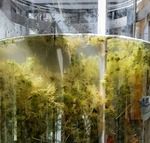
More founder material is needed to enable the large-scale cultivation of peat mosses (Sphagnum) in paludiculture. The researchers in the MOOSstart project are working on an efficient method for propagating the material, as well as on the technology for scattering it.
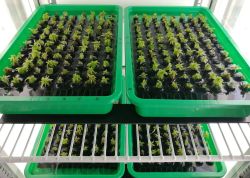
The large-scale cultivation of peat moss in paludiculture offers an outstanding opportunity to produce high-quality renewable raw materials as a peat substitute for horticultural substrates, while protecting and promoting both the climate and biodiversity.
However, this requires one thing first: large quantities of founder material to enable Sphagnum paludiculture on a large scale. The predecessor project MOOSzucht has shown that it is possible to propagate vegetative founder material in a photobioreactor in pure culture, regardless of the season. The main objective of MOOSstart, which began in January 2023 and will run for three years, is to develop a low cost bioreactor based on the results to date in order to scale up the production of founder material. As a prototype, the new bioreactor will then be subjected to a practical test at a potential producer. In addition, a technique for scattering the bioreactor mosses on rewetted bog soils will be developed.
Of course, the success of the project also depends on suitable Sphagnum species. In order to find them, twelve focus species were put to the test last year in a mesocosm experiment with different water levels and nutrient contents. 662 peat moss samples, mostly from European countries, and also peat moss clones that were originally grown from spores in the photobioreactor were tested. The results are currently being analyzed.
The universities of Greifswald and Freiburg, the Anhalt University of Applied Sciences and the company Niedersächsische Rasenkulturen GmbH are involved in the project. It is funded by the Federal Ministry of Food and Agriculture and the project executor is the Agency of Renewable Resources (FNR).
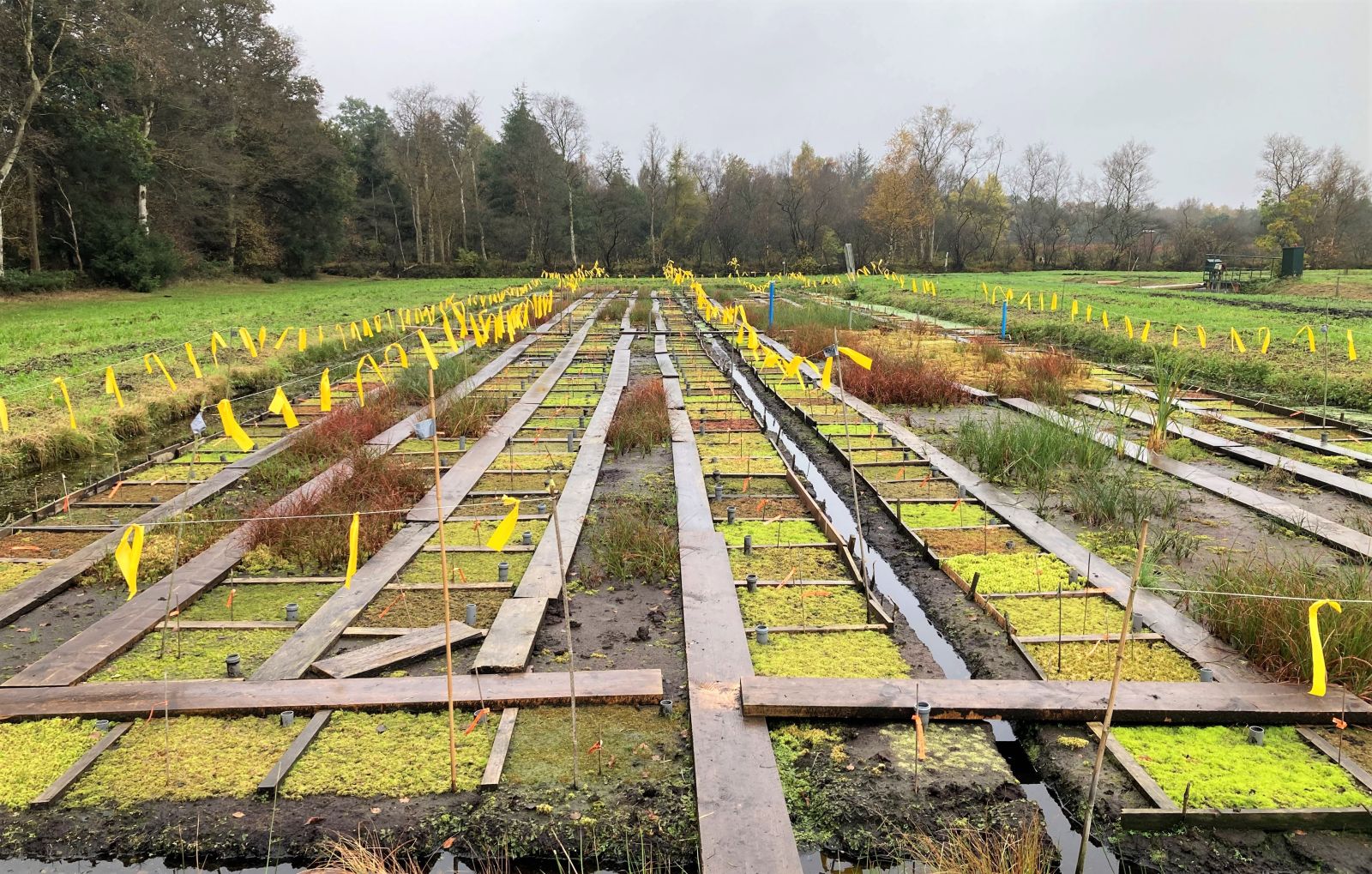
Field experiment on productivity differences between origins of twelve Sphagnum species. Picture: Anja Prager
News from other paludiculture projects
International Projects
Cattail harvest - now just separate the leaf and seed bulb
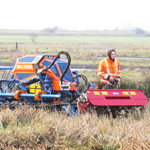
Removing paludiculture biomass without contamination, even if the harvested area is partly covered with water - at the field day in Zunderdorp in the Netherlands in January, this was achieved without any problems using the Softrak 140 with a new hydraulic high tipper.
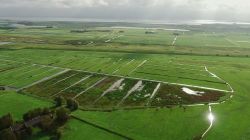
At the field day on a five-hectare cattail cultivation area near Amsterdam, the Dutch company Wellink, also a partner in the TyphaSubstrat project, presented the machines it has currently developed for use in cattail harvesting.
These included a track-based Loglogic Softrak 140, equipped with a front-mounted double forage harvester and tiltable crop bunker, a remote-controlled implement carrier from Irus Deltrack, carrying a rake-swather combination, and an Ibex G2 single-axle bar mower. An Irus double-track with mower-broom combination was also on display.
All of the special machines presented were able to drive over the peatland surface, which was still partially covered by winter precipitation, without any significant damage to the soil or plants. The Loglogic Softrak 140 is designed for large-scale use and impresses with its high area output and simultaneous removal of the biomass in the ride-on bunker. An advantage is the new development of a hydraulically operated high tipper, which allows mowed and chopped crop to be tipped directly onto a truck without intermediate storage and contamination. The Softrak 140 is already being used successfully for harvesting stalk-type paludicultures as well as peat moss. The crucial point now is to be able to harvest leaf mass and seed bulbs of cattail separately. Wellink therefore wants to further develop the front mower.
The Ibex bar mower for mowing can also be combined with the subsequent Irus belt rake for combining and transporting the mowed crop for smaller areas. The field day clearly showed that there are now advanced harvesting systems for both small and large areas that can make it easier to switch to wet peatland use.
The TyphaSubstrat project is funded by the Federal Ministry of Food and Agriculture, the project executor is the Agency for Renewable Resources (FNR).

Irus belt rake swathing cattail crops (left) and harvesting cattails with the Ibex G2 single-axle bar mower and the Loglogic Softrak 140.
Pictures: Jens-Uwe Holthuis
Sensing peat

The Sensing Peat project focuses on combining artistic knowledge and peatland protection from a transdisciplinary perspective. Its new webpage now offers an overview of art projects on peatlands from an arty point of view.
The project Sensing Peat embraces the relation of artistic knowledge and peatland protection from a transdisciplinary perspective. It strongly builds on the Venice Agreement on protecting global peatlands locally. The art and research network includes local and global artists, activists, groups and initiatives who see themselves as guardians of their peatlands and the ecological, social, political and cultural values associated with them. It is a project of Succow Foundation, partner in the Greifswald Mire Centre, and is supported by the Andrea von Braun Foundation. The new Sensing Peat website provides information on the network’s events, exhibitions, workshops, forums and community members.
German Projects
CuliMoor: Is that true about the MMMs?
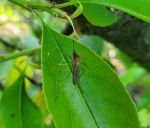
The three Ms, moor, mosquitoes, malaria, form a combination with a miserable reputation - rightly so? In the Valley of the river Peene, the CuliMoor project is investigating where exactly mosquitoes live, what they feed on and whether they actually transmit pathogens.
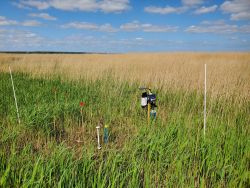
Mosquitoes need high humidity. They depend on water for their reproduction, in which their eggs develop into larvae and then pupae. Peatlands offer both. A mosquito bite is not only unpleasant, it can also transmit pathogens. Three Ms in a miserable combination that causes skepticism or rejection of rewetting. The University of Greifswald and the Friedrich Löffler Institute are currently investigating whether this is actually the case in the Valley of the river Peene. CuliMoor is the name of the joint project, made up of the Latin name 'culicidae' for the family of mosquitoes and - obviously - peatland. On natural and rewetted peatlands as well as agricultural and settlement areas, it investigates where exactly mosquitoes are found, which species there are and which pathogens they carry.
To this end, the scientists collected mosquitoes in all life stages. In 2023, they set up 15 traps in the lower Peene Valley in settlements, on drained and wet peatland area and on areas close to water to create a representative picture of the study area.
They were able to catch around 19,000 mosquitoes and assign them to 23 species.
An initial evaluation shows that four species occurred particularly frequently: the common house mosquito Culex pipiens s. l. and three species of the genus Aedes, namely Ae. flavescens, Ae. caspius s. l. and, with by far the most individuals, Ae. cinereus s. l. (s. l. stands for sensu lato and means that it is not a single species, but a species complex of morphologically and genetically very similar animals). Most individuals entered the traps between the end of August and the end of September.
Previous findings indicate that the different mosquito species prefer certain areas within the study area. Which habitat the individual species prefer allows conclusions to be drawn about how and to what extent they can endanger humans. A mosquito in a human settlement area poses a greater potential health risk than a mosquito in a wet area. Ae. cinereus s. l. was most frequently detected in traps on peatlands. Ae. vexans, on the other hand, seems to avoid peatlands. Culex pipiens s. l. was, as expected, distributed in all traps, but apparently prefers human settlements, as does Ae. annulipes s. l..
In order to check whether pathogens are circulating in the mosquito populations in the lower Peene Valley, the mosquitoes caught will be tested in the course of the study. The researchers also want to determine which host the female insects prefer to feed on, as this also helps to assess the potential risk. Many mosquito species are very host-specific, meaning they feed almost exclusively on one host group, such as birds. These so-called ornitophilic species are less dangerous to humans. The probability of being bitten by such a mosquito is lower.
Meteorological and hydrological data should complete the picture of the mosquito fauna in the (rewetted) peatlands and adjacent areas and ultimately enable a well-founded risk assessment. This is an important contribution to making rewetting projects as compatible as possible for people and animals living nearby.
CuliMoor was launched just over a year ago and will run until the beginning of 2026. It is funded by the Federal Ministry of Food and Agriculture.
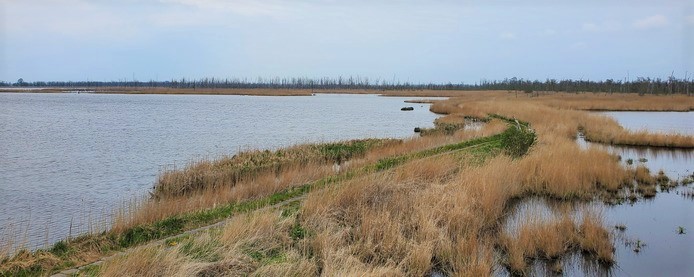
Anklamer Stadtbruch study area. Picture: Patrick Gutjahr
PaludiZentrale enables knowledge transfer
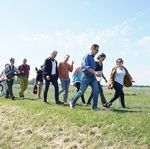
The new project pools knowledge on peatland soil protection from model and demonstration projects and ensures comparable and standardized data. To do this, it uses the findings from four projects that deal with topics relating to peatlands and the utilization of biomass from paludiculture.
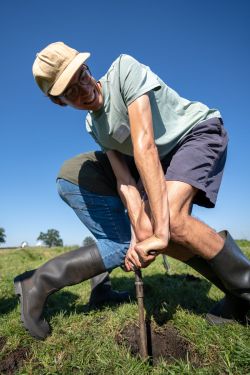
The PaludiZentrale project combines the power for more economic paludiculture potential from four recently launched model and demonstration projects (MuDs) on peatland protection and the utilization of biomass from rewetted areas. Carried out jointly by the Thünen Institute in Braunschweig, the University of Greifswald and the Succow Foundation, it coordinates the uniform collection and networking of scientific data. It evaluates results across the board and develops proposals for political and economic framework conditions as well as recommendations for practical implementation and also takes care of knowledge transfer.
The researchers will support the new model and demonstration projects in raising the water level at least close to the surface on raised and fenland areas and cultivating paludicultures. Another task is to advance the utilization of peatland biomass in practice. The three projects "Management and biomass utilization of wet fens in Brandenburg (WetNetBB)" are dedicated to this, "Living Lab Teufelsmoor - climate- and nature conservation-oriented wet management of peatland soils with innovative utilization of biomass in the district of Osterholz (LiLa Teufel)" and "Sustainable production and utilization of cattail on fenland sites in Lower Saxony (RoNNi)" are dedicated to the cultivation of reeds and cattail and the wet meadows on fen areas for use in building materials or as an energy source, for example. The project "Sphagnum paludiculture as a sustainable agricultural use of bog soils (MOOSland)" focuses on the large-scale implementation of peat moss paludiculture and the use of biomass as a peat substitute in horticulture.
The Federal Ministry of Food and Agriculture (BMEL) is supporting the ten-year project with funding from the Climate Transformation Fund (KTF); the project executor is the Agency for Renewable Resources (FNR).
MOOSland: The path to industrial peat moss cultivation
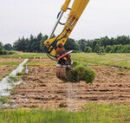
The new project aims to make the large-scale and economically viable cultivation of peat mosses attractive and promote the marketing of the biomass obtained as a planting substrate. A quality seal shall help to establish the new product on the market.
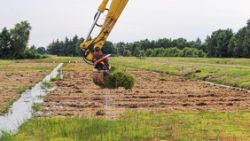
Over 80 percent of Germany's bogs are located in Lower Saxony. Peat, the most important raw material for horticultural substrates and soils, is currently extracted from around 6,000 hectares of these areas. This is why the peat and substrate industry is primarily located in this federal state. However, for climate protection reasons, the use of peat should be minimized and renewable raw materials used instead. At the same time, the plants typical of bogs, peat mosses, are also an excellent substitute for peat as biomass. Goes together like paludi and culture? Exactly! That's why the University of Greifswald wants to bring the cultivation of peat mosses to a new level in the new ten-year MOOSland model and demonstration project with seven partners from Lower Saxony. Two existing pilot areas, in total around 20 hectares, will be optimized and expanded by at least seven hectares. The project is also using agricultural structure analysis and stakeholder participation to develop obstacles and solutions for large-scale implementation so that peat moss can also be cultivated on a large scale on other areas.
In order to improve the marketing of peat moss as a raw material for substrates, MOOSland is aiming to develop a RAL quality label, which other common raw materials in the substrate sector also have. In addition, suitable substrate mixtures are being developed and tested in the MOOSland project.
The project is funded by the Federal Ministry of Food and Agriculture, and the project executor is the Agency for Renewable Resources (FNR).
A market for peatlands

One million hectares of peatlands in Germany could be rewetted and utilized in paludiculture - thus make a valuable contribution to climate protection.

Nationwide, one million hectares of agriculturally used, drained peatlands can be rewetted and their potential for climate protection and the economy can be increased - according to the results of a study commissioned by the toMOORow initiative. In the best case, almost the entire area can be used for climate-friendly wet farming of peatlands (paludiculture). In the sectors examined, a market share of 15% would have to be achieved for biomass produced on peatlands. The industries for paper and packaging, construction and insulation materials, energy and plastics in particular can use paludi-biomass. The use of renewable raw materials offers great potential in the event of raw material shortages (e.g. wood), replaces fossil resources and thus improves the carbon footprint of companies. At the same time, regional and therefore reliable supply chains are used, which enable savings in transport. The biomass from peatlands is suitable for a wide range of new products and has great potential for both the circular economy and the credible sustainability positioning of companies. “Preliminary study on the creation of scalable value chains for the use of Paludi biomass” is the name of the current publication of the toMOORow initiative, which was launched by the Michael Otto Environmental Foundation and the Succow Foundation. The study examined four scenarios and shows that paludiculture would be possible on an industry-relevant scale and at the same time profitable for owners, producers and users and a big plus for climate protection.
MoorNet: Concentrated knowledge about peatlands
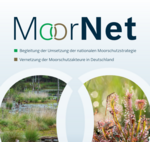
All information on peatland protection projects in Germany at a glance, filterable and with networking opportunities - that's what MoorNet offers. A database comprising 129 projects to date is just one component of the project, which provides technical support for the National Peatland Protection Strategy.
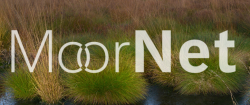
Launched last year, the MoorNet project database now comprises 129 projects. 23 funding programs and 285 institutions involved in peatland protection are listed there and can be searched according to various criteria. The platform also aims to support peatland conservation stakeholders in Germany by providing further training opportunities and information on events. It thus makes an essential contribution to the implementation of the National Peatland Protection Strategy, which was adopted by the German government at the end of 2022.
This places importance on peatland conservation, aims to raise public awareness of it and anchor the importance of peatland landscapes there. All peatlands with a high significance for nature conservation and climate protection are to be rewetted and permanently secured by 2035. Value chains with innovative products and services are to be established on degraded areas used for agriculture and forestry. The Federal Ministry for the Environment (BMUV) and the Federal Agency for Nature Conservation (BfN) are implementing the strategy and are planning effective incentives for farmers so that they can manage rewetted peatland in new ways and voluntarily promote restoration.
Funding is provided by the Federal Ministry for the Environment, Nature Conservation, Nuclear Safety and Consumer Protection.
Events
All current events are compiled in our online calendar.
Publications
Literature:
Bockermann, C., Eickenscheidt, T. & Drösler, M. 2024: Adaptation of fen peatlands to climate change: rewetting and management shift can reduce greenhouse gas emissions and offset climate warming effects. Biogeochemistry https://doi.org/10.1007/s10533-023-01113-z
Hansjürgens, B., Bolte, A., Flessa, H., Heidecke, C., Nordt, A., Osterburg, B., Pongratz, J., Rock, J., Schäfer, A., Stürmer, W. & Wichmann, S. 2023. Emissionsreduktionen durch ökosystembasierte Ansätze. In: Brasseur, G.P., Jacob, D., Schuck-Zöller, S. (eds) Klimawandel in Deutschland. Springer Spektrum, Berlin, Heidelberg. https://doi.org/10.1007/978-3-662-66696-8_34
Hering et al. 2023: Securing success for the Nature Restoration Law - The EU law would complement many others, but challenges loom. Science 382-6676, pp. 1248-1250, https://doi.org/10.1126/science.adk1658
Leibniz-Forschungsnetzwerk Biodiversität 2024. 10 Must-Knows aus der Biodiversitätsforschung 2024 (Version 1, S. 72). Potsdam-Institut für Klimafolgenforschung. https://doi.org/10.5281/zenodo.10794362
Martens, H.R., Laage, K., Eickmanns, M., Drexler, A., Heinsohn, V., Wegner, N., Muster, C., Diekmann, M., Seeber, E., Kreyling, J., Michalik, P. & Tanneberger, F. 2023: Paludiculture can support biodiversity conservation in rewetted fen peatlands, Nature, Volume 13, 18091, https://doi.org/10.1038/s41598-023-44481-0
Nordt, A., Wichtmann, W. 2024. Paludikultur: Faserverarbeitung für unterschiedliche Zielmärkte. In: Hassel, AV., Schiller, D., Seiberling, S., Theel, C., Fleßa, S. (eds) Bioökonomie und regionaler Strukturwandel. SDG - Forschung, Konzepte, Lösungsansätze zur Nachhaltigkeit. Springer Gabler, Wiesbaden. https://doi.org/10.1007/978-3-658-42358-2_24
Raman, S. 2024: Culture and conservation thrive as Great Lakes tribes bring back native wild rice.
https://news.mongabay.com/2024/03/culture-and-conservation-thrive-as-great-lakes-tribes-bring-back-native-wild-rice/?mc_cid=9a98ff6978&mc_eid=268d1757f8
Systain Consulting GmbH 2023: Vorstudie zur Schaffung von skalierbaren Wertschöpfungsketten für die Nutzung von Paludi-Biomasse, Umweltstiftung Michael Otto, Hamburg, https://assets-global.website-files.com/613201573773233e276a02b9/652cfbc1da987ccd91429a42_toMOORow_Systain_Machbarkeitsstudie.pdf
Temmink, R.J.M., Robroek, B.J.M., van Dijk, G., Koks, A.H.W, Käärmelahti, S.A., Barthelmes, A., Wassen, M.J., Ziegler, R., Steele, M.N., Giesen, W., Joosten, H., Fritz, C., Lamers, L.P.M. & Smolders, A. J. P. 2023: Wetscapes: Restoring and maintaining peatland landscapes for sustainable futures, Ambio, Volume 52, 1519–1528, https://doi.org/10.1007/s13280-023-01875-8
Others:
Informations on the Agrarpolitische Tagung in January 2024 in Güstrow, Germany.








